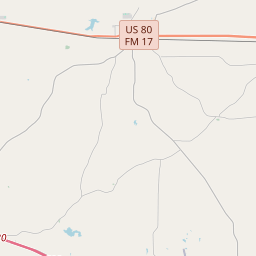St. Paul Missionary Baptist Church
Historical marker location:






Extensive settlement in this area began after the end of the Texas Revolution in 1836. The Texas legislature created Wood County in 1850, influencing further settlement. The community of Sodom developed here by 1871, when the Rev. John Branham founded St. Paul Missionary Baptist Church in the home of Pinkney and Bettie Brooks. Charter members were Mandy Hall, Mariah Lee, Mary Garrett, Ellis Lee, Willis Oliver and Bettie Brooks.
In 1873, renamed Mineola, the town boasted two new rail lines. That same year, St. Paul church members built their first sanctuary at the corner of Harris and Stone streets. The church held early baptisms in a creek near present Wren Street, and the congregation grew over the next decades. In 1897, it purchased this site and constructed a new sanctuary. Later, under the leadership of the Rev. T.B. Johnson, who served the church from 1914 to 1941, the church remodeled its early sanctuary. In 1958, the congregation replaced it with a larger structure.
The Rev. Johnson served as moderator of the East Texas Baptist Association, as did the Rev. Lawrence W. Pryor, pastor from 1945 to 1949, who was also president of the Baptist Training Union Congress. These men and other pastors, including the Rev. Charles Colquitt, who served for more than 41 years, helped establish the congregation as a long-standing Mineola institution. Other church leaders included numerous deacons, deaconesses, junior deacons, and men and women who served as trustees and in other capacities.
St. Paul Missionary Baptist Church continues to grow and serve the Mineola community as a tie to area pioneers, and as a place for worship, education, service and fellowship.
(2005)
As one of the most visible programs of the Texas Historical Commission (THC), historical markers commemorate diverse topics in Texas history, including: the history and architecture of houses, commercial and public buildings, religious congregations, and military sites; events that changed the course of local and state history; and individuals who have made lasting contributions to the state, community organizations, and businesses.
The Texas Rangers, a famous law enforcement agency, were first organized in 1835 to protect settlers from Native American attacks.
In the early 1800s, the region attracted settlers from the United States who were drawn to the lush forests and abundant resources. The first permanent European-American settlement was established in 1846, and it was named Quitman after John A. Quitman, a prominent politician of that time.
During the Civil War, Wood County played a significant role in supporting the Confederacy. Many residents enlisted in the Confederate Army, and the area became a center for military recruitment and training. After the war, the county suffered economically, but with the introduction of the railroad in the late 19th century, the economy began to recover.
Wood County's economy primarily relied on agriculture, with the growth of cotton, corn, and timber industries. The establishment of sawmills and the development of the timber industry brought prosperity to the area. In the early 20th century, the discovery of oil and gas reserves further fueled the county's economic development.
Today, Wood County continues to be an important agricultural and industrial center in Texas. The county's history is evident in its charming small towns, historic sites, and natural beauty. The strong sense of community and appreciation for the region's heritage are still evident today, making Wood County a vibrant and inviting place to visit or live.
Wood County Timeline
This timeline provides a condensed summary of the historical journey of Wood County, Texas.
- 1850: Wood County is established by the Texas legislature.
- 1852: The first courthouse in Wood County is built in Quitman.
- 1860: The population of Wood County reaches 4,867.
- 1875: The railroad reaches Wood County, boosting economic growth.
- 1895: The county seat is moved from Quitman to Mineola.
- 1920: The population of Wood County peaks at 19,109.
- 1930: The Great Depression hits Wood County, causing economic hardship.
- 1958: Lake Holbrook is completed, providing a recreational area for residents.
- 1970: Wood County's population decreases to 12,230.
- 1983: Holly Lake Ranch, a gated residential community, is established in Wood County.
- 2000: The population of Wood County surpasses 37,000.
- 2019: Wood County experiences steady growth and continues to be a thriving community.